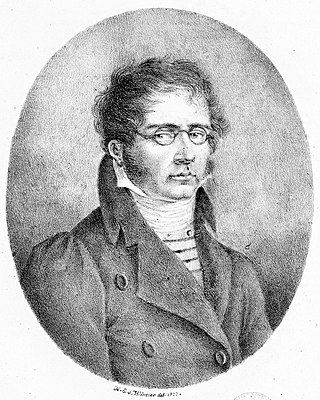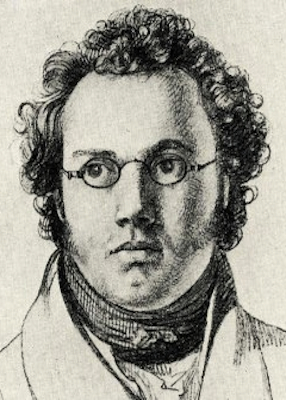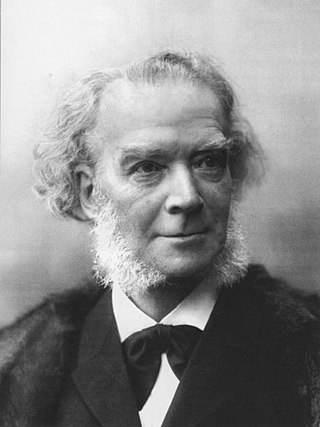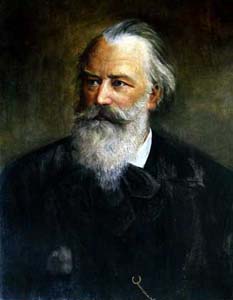The Piano Quintet No. 1 in A minor, Op. 30, was composed by the French composer Louise Farrenc in 1839.
The Piano Quintet No. 1 in A minor, Op. 30, was composed by the French composer Louise Farrenc in 1839.
This work is scored for piano, violin, viola, cello & double bass.
This piece adheres to the standard 4-movement form:

Ludwig van Beethoven's Opus 1 is a set of three piano trios, first performed in 1795 in the house of Prince Lichnowsky, to whom they are dedicated. The trios were published in 1795.
Sonata form is a musical structure generally consisting of three main sections: an exposition, a development, and a recapitulation. It has been used widely since the middle of the 18th century.

Franz Ignaz Danzi was a German cellist, composer and conductor, the son of the Italian cellist Innocenz Danzi (1730–1798) and brother of the noted singer Franzeska Danzi. Danzi lived at a significant time in the history of European music. His career, spanning the transition from the late Classical to the early Romantic styles, coincided with the origin of much of the music that lives in our concert halls and is familiar to contemporary classical-music audiences. As a young man he knew Wolfgang Amadeus Mozart, whom he revered; he was a contemporary of Ludwig van Beethoven, about whom he — like many of his generation — had strong but mixed feelings; and he was a mentor for the young Carl Maria von Weber, whose music he respected and promoted.

The Trout Quintet (Forellenquintett) is the popular name for the Piano Quintet in A major, D. 667, by Franz Schubert. The piano quintet was composed in 1819, when he was 22 years old; it was not published, however, until 1829, a year after his death.

The Piano Quintet in E-flat major, Op. 44, by Robert Schumann was composed in 1842 and received its first public performance the following year. Noted for its "extroverted, exuberant" character, Schumann's piano quintet is considered one of his finest compositions and a major work of nineteenth-century chamber music. Composed for piano and string quartet, the work revolutionized the instrumentation and musical character of the piano quintet and established it as a quintessentially Romantic genre.
The Piano Quintet in F minor, Op. 34, by Johannes Brahms was completed during the summer of 1864 and published in 1865. It was dedicated to Her Royal Highness Princess Anna of Hesse. As with most piano quintets composed after Robert Schumann's Piano Quintet (1842), it is written for piano and string quartet.

Carl Heinrich Carsten Reinecke was a German composer, conductor, and pianist in the mid-Romantic era.

The Clarinet Sonatas, Op. 120, Nos. 1 and 2, are a pair of works written for clarinet and piano by the Romantic composer Johannes Brahms. They were written in 1894 and are dedicated to the clarinetist Richard Mühlfeld. The sonatas stem from a period late in Brahms's life where he discovered the beauty of the sound and tonal colour of the clarinet. The form of the clarinet sonata was largely undeveloped until after the completion of these sonatas, after which the combination of clarinet and piano was more readily used in composers’ new works. These were the last chamber pieces Brahms wrote before his death and are considered two of the great masterpieces in the clarinet repertoire. Brahms also produced a frequently performed transcription of these works for viola with alterations to better suit the instrument.

Nikolai Karlovich Medtner was a Russian composer and virtuoso pianist. After a period of comparative obscurity in the 25 years immediately after his death, he is now becoming recognized as one of the most significant Russian composers for the piano.

AntonJoseph Reicha (Rejcha) was a Czech-born, Bavarian-educated, later naturalized French composer and music theorist. A contemporary and lifelong friend of Beethoven, he is now best remembered for his substantial early contributions to the wind quintet literature and his role as teacher of pupils including Franz Liszt, Hector Berlioz and César Franck. He was also an accomplished theorist, and wrote several treatises on various aspects of composition. Some of his theoretical work dealt with experimental methods of composition, which he applied in a variety of works such as fugues and études for piano and string quartet.

Louise Farrenc was a French composer, virtuoso pianist and teacher of the Romantic period. Her compositions include three symphonies, a few choral works, numerous chamber pieces and a wide variety of piano music.
The String Quintet No. 4 in G minor, K. 516, written by Wolfgang Amadeus Mozart, is like all of Mozart's string quintets a "viola quintet" in that it is scored for string quartet and an extra viola . The mood of the piece is dark and melancholic, typical of Mozart's G minor works.
The Quintet in E♭ major for Piano and Winds, K. 452, was composed by Wolfgang Amadeus Mozart on March 30, 1784 and premiered two days later at the Imperial and Royal National Court Theater in Vienna. Shortly after the premiere, Mozart wrote to his father that "I myself consider it to be the best thing I have written in my life." It is scored for piano, oboe, clarinet, horn and bassoon.
The Piano Sonata in A minor D. 845 (Op.42) by Franz Schubert is a sonata for solo piano. Composed in May 1825 and entitled Premiere Grande Sonata, it is the first of three sonatas published during the composer's lifetime, the others being D.850 and D.894. Conceived as a set, these works were composed during what was reportedly a period of relatively good health and spirits for Schubert, and are praised for their quality and ambition. This first sonata in particular marks a significant step toward the composer’s mature piano sonata style; the format and several characteristic stylistic elements continue through the last.
Felix Mendelssohn's Sextet in D major, Op. 110, MWV Q 16, for piano, violin, two violas, cello, and double bass was composed in April–May 1824, when Mendelssohn was only 15, the same time he was working on a comic opera Die Hochzeit des Camacho. Its composition took place between the Viola Sonata and the Piano Quartet No. 3. It also preceded the famous Octet, Op. 20 by about a year. 1824 is also the probable year of the composition of the Clarinet Sonata. Like the latter, the Sextet was not published during the composer's lifetime. Its first edition was issued in 1868 as a part of a complete collection of Mendelssohn's works. Hence the misleading high opus number.

Johannes Brahms composed his Piano Trio No. 2 in C Major, Op. 87, between 1880 and 1882. It is scored for piano, violin and cello. He wrote this piece at the age of 49.
Johannes Brahms' String Quintet No. 1 in F major, Op. 88, was composed in 1882 in the spa town of Bad Ischl, Upper Austria, and published by the firm of Fritz Simrock. It was first performed at a chamber music evening in Frankfurt on 29 December 1882.
The Piano Quintet No. 2 in E major, Op. 31, was composed by the French composer Louise Farrenc in 1840.

The Piano Quartets, WoO 36, by Ludwig van Beethoven are a set of three piano quartets, completed in 1785 when the composer was aged 14. They are scored for piano, violin, viola and cello. He composed a quartet in C major, another in E-flat major, and a third in D major. They were first published posthumously in 1828, however numbered in a different order: Piano Quartet No. 1 in E-flat major, Piano Quartet No. 2 in D major, and Piano Quartet No. 3 in C major.